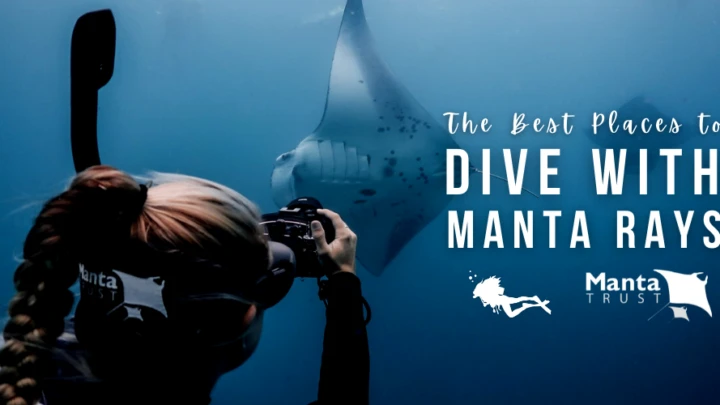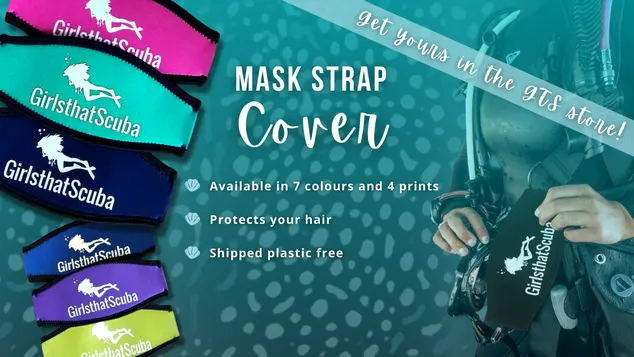The first time you dive or snorkel with a manta ray in the ocean is a memory that stays with you forever! These huge, inquisitive fish have a large brain and, if you’re lucky, you may get a close encounter and surface feeling you have ‘connected’ with them. It’s the ultimate marine experience.
There are many places in the world where you can dive or snorkel with these gentle, majestic ocean creatures. If you’re looking for the best places to dive with manta rays, read on to find out more!
What is a Manta Ray?
Mantas are cartilaginous, filter-feeding fish and are close relatives of sharks and rays, which are found in the tropical and sub-tropical oceans of the world.
There are currently two distinct species of manta ray and there are some key differences between them.
The reef manta rays (Mobula alfredi) are smaller with a wingspan up to 4m. These are found in reefs and atolls in shallow or coastal areas, and have distinct Y-shaped shoulder pattern on their back.
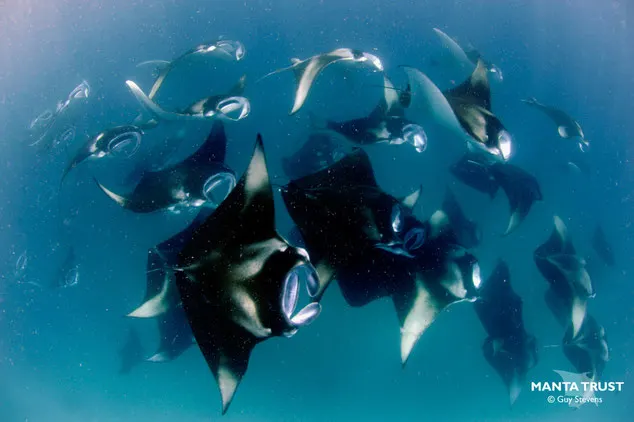
The giant oceanic manta rays (Mobula birostris) can have a wingspan up to 7m. They live in the open ocean in deeper waters and feature a distinct T-shaped shoulder pattern.
Mantas filter feed on microscopic plankton adopting some pretty cool feeding strategies – including chain feeding, somersaulting and ‘piggybacking’ on other manta rays!
The ocean can be a grubby place and manta rays rely on cleaning stations. These are important areas of coral / rock formations where they get their skin, gills and teeth cleaned by a variety of small cleaner wrasse species – a bit like a manta spa!
Some of the best manta diving encounters happen at cleaning stations, as mantas will gentle hover over the area and will even form a ‘queue’ waiting for their turn.
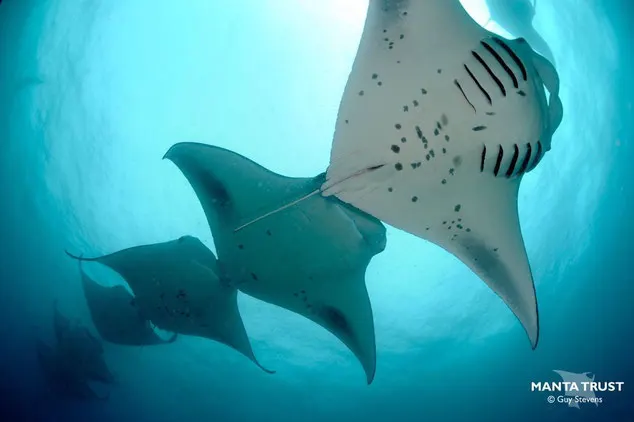
Where Can I Dive with Manta Rays?
When you’re choosing where to go, check out the guide to Responsible Manta Operators around the world. It’s important to do your research and choose a Dive Operator or Expedition that has good reviews with responsible practices.
The Maldives is one of the best places in the world for manta ray encounters, thanks to their protected status. The Manta Trust have been studying the reef and oceanic manta populations across the Maldives for over 10 years and have over 5,000 individuals now recorded on their database.
Hanifaru Bay in Baa Atoll is host to the ‘Cyclone’ between June – November, one of the biggest mass feeding manta events in the world. Other great locations to visit are Ari Atoll, Raa Atoll, and Lhaviyani Atoll.
As well as the Maldives, the following locations are our top manta destinations:
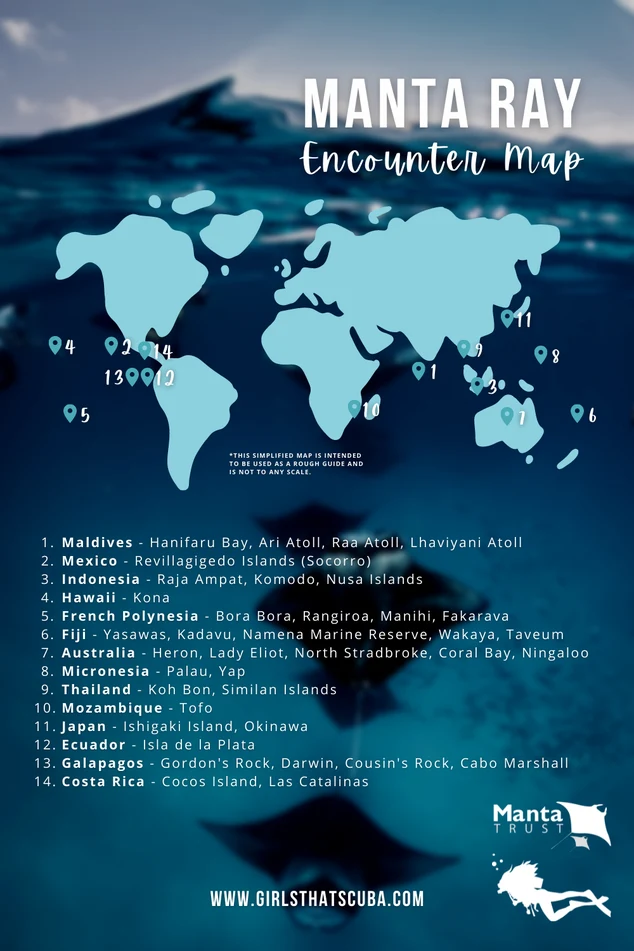
- Maldives – Hanifaru Bay, Ari Atoll, Raa Atoll, Lhaviyani Atoll.
- Mexico – Revillagigedo Islands (Socorro)
- Indonesia – Raja Ampat, Komodo & Flores, Bali (Nusa Islands)
- Hawaii – Kona
- French Polynesia – Bora Bora, Rangiroa, Manihi, Fakarava Atoll
- Fiji – Yasawas, Kadavu, Namena Marine Reserve, Wakaya and Taveum
- Australia – (East Coast) Heron Island, Lady Elliot Island, North Stradbroke Island, (West Coast) Coral Bay, Ningaloo Reef
- Micronesia – Palau & Yap
- Thailand – Koh Bon & Similan Islands
- Mozambique – Tofo
- Japan – Ishigaki Island, Okinawa
- Ecuador – Isla de la Plata
- Galapagos – Gordon’s Rock, Darwin Island, Cousin’s Rock and Cabo Marshall
- Costa Rica – Cocos Island, Las Catalinas
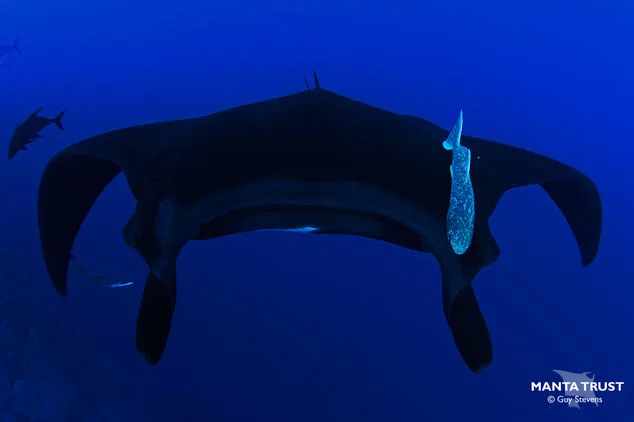
Getting the Best Manta Experience
Mantas are very sensitive to disturbance, and uncontrolled tourism has the potential to do more harm than good to local manta populations, such as driving them away from important areas where they clean, feed or breed.
After several years of research conducted in the Maldives, the Manta Team have developed simple guidelines for divers, snorkelers and operators to help ensure the best experience for everyone.
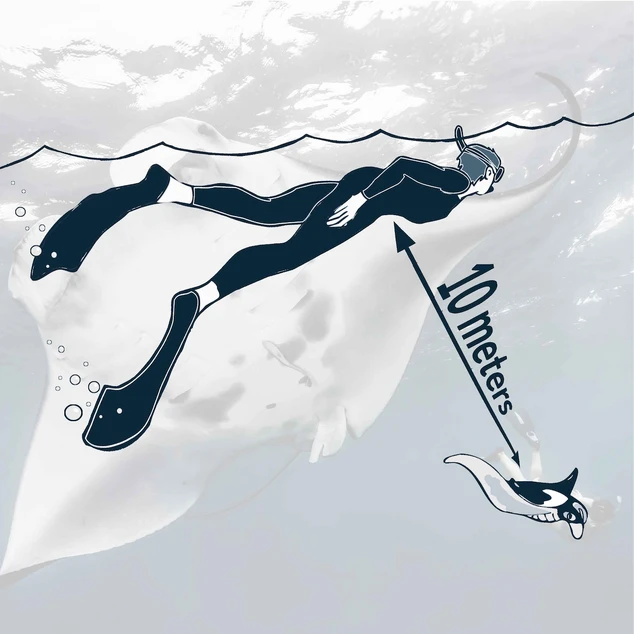
You can watch a short video and read the guidelines in full at Swim with Mantas, but a quick summary is:
- Enter the water quietly and calmly – at least 10m away from the mantas.
- Approach mantas from the side, giving them a clear path in front. Keep splashing and noise to a minimum so as not to scare them away.
- Don’t get any closer than 3m and never touch a manta ray. If one does ever swim very close to you stay calm and remember they are harmless.
- Do NOT chase after a manta. You’ll never catch up and will likely scare them away.
- At manta cleaning stations, don’t go over the cleaning area, stay to the side ensuring you aren’t damaging any reef beneath you.
- If taking photos, NEVER point your flash directly at their eyes. Avoid using flash photography if possible.
Becoming a Manta Citizen Scientist
There are several ways you can help assist with global manta research.
Take a Manta Belly-Shot Photo
All mantas have unique spot patterns which are used to identify them like a human finger print. So if a manta swims over you, try and snap photo of their underbelly and send it to the Manta Trust IDtheManta project.
It will be added to the worldwide database of mantas, and if you have spotted a new manta ray you might even get the chance to name it!
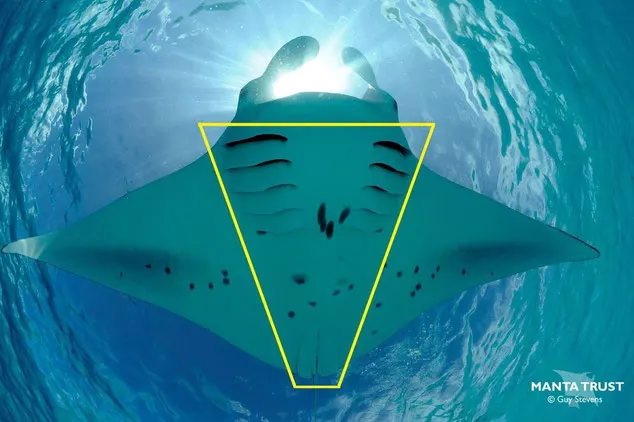
Take Part in a Manta Expedition
If you’re a manta lover, taking part in a dedicated manta expedition will give you the chance to take part in manta research. You’ll be immersed in the amazing world of mantas with a dedicated scientist onboard.
Volunteer With a Manta Project
Look for projects such as Manta Caribbean Project in Mexico, which has one month placements from June to September. You need to be over 21 with a good level of swimming and snorkelling skills.
Threats to Manta Rays
In some areas, manta ray populations have plummeted by as much as 90% due to a combination of issues.
- Bycatch in high seas fishing nets. Each year thousands of manta rays are caught and killed incidentally by fisheries targeting other species.
- Targeted for their gills, which have become popular used in Asian Medicines since the 1970s. This has had a devastating impact on populations.
- Climate change resulting in loss of habitats, loss of cleaning stations, and reduction in food availability
- Boat strikes, entanglement and unsustainable tourism.
Find out more and learn how you can help here.
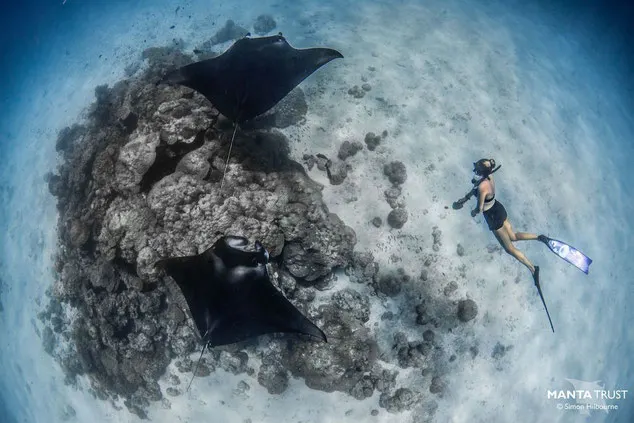
Quirky Manta Facts
Now that you know where to dive with manta rays, here are some fun manta ray facts to get you excited for your adventures ahead.
- Mantas are born into a life of perpetual motion. They can never stop moving, as they need to keep water flowing over their gills to breathe.
- There are a few well documented cases where mantas with fish hooks embedded in their skin or entangled in fishing nets, have approached divers and appeared to ask them for ‘help’.
- Mantas have large cephalic fins on the sides of their mouths, which they can furl and unfurl to help them funnel plankton-rich water into their mouths.
- Some mantas enjoy the feeling of bubbles and will actively swim over groups of scuba divers – if this happens to you, enjoy it and just keep breathing normally into your regulator!
- Female reef mantas don’t reach sexual maturity until around 15 years old and on average they give birth to one pup every 2 to 3 years. In some parts of the world this can be as low as every 7 years, and this low reproductive rate makes them extremely vulnerable.
- When it comes to mating the larger female manta will lead a group of up to thirty male mantas in an elaborate courtship dance, zipping, twisting and turning through the water until once one male suitor remains!
- The deepest recorded dive for a reef manta ray was 672m in New Caledonia.

About the Author
Elfie Gloster works for the UK charity the Manta Trust, overseeing their Swim with Mantas project. She has spent 20 years diving all over the world and rates her manta encounters in Hanifaru Bay, Maldives as one of the best aquatic experiences of her life!

